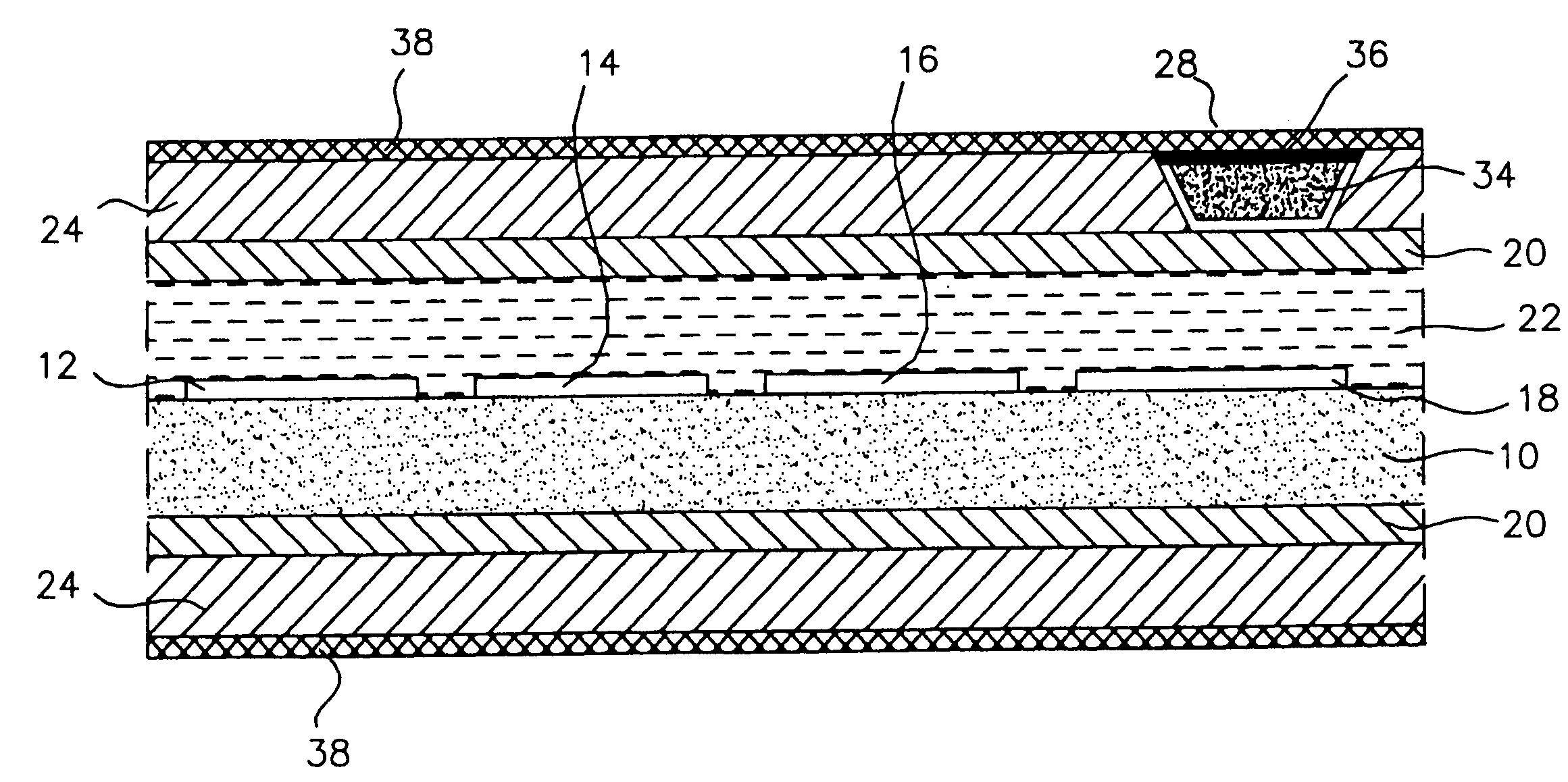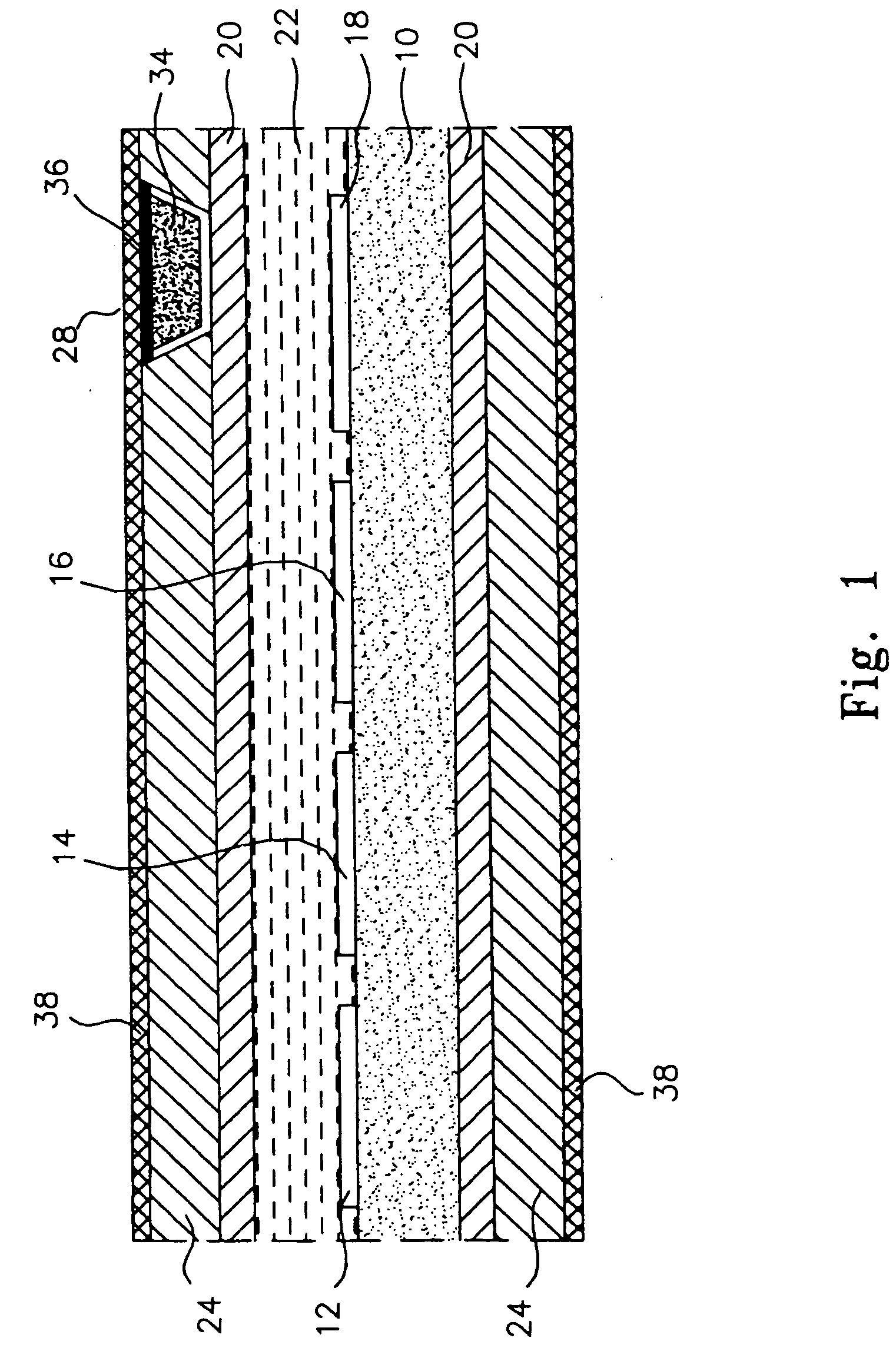Implantable enzyme-based monitoring system having improved longevity due to improved exterior surfaces
a monitoring system and enzyme technology, applied in the field of implantable monitoring systems, can solve the problems of inability to maintain the proper glucose level in the blood of individuals, the requirement can, and often does, pose a serious threat, and achieve the effects of improving the reliability, accuracy, and responsiveness of the sensor, and improving the longevity of the sensor
- Summary
- Abstract
- Description
- Claims
- Application Information
AI Technical Summary
Benefits of technology
Problems solved by technology
Method used
Image
Examples
example 1
Polymeric Window Cover
[0046] As stated above, the materials of the polymeric cover for the window in the outer membrane of the preferred, glucose monitoring system must be chosen to be biocompatible, glucose and oxygen permeable and have a mechanical strength comparable to, and be able to adhere well to, the outer membrane. In preferred embodiments, the outer membrane is formed of silicone rubber, thus it is this material to which the polymeric window cover must adhere and comparable to which the cover's mechanical strength should be.
[0047] Preferable herein, is a polymeric system of 2-hydroxyethyl methacrylate (HEMA), N,N,-dimethylamino-ethyl methacrylate (DMAEMA) and methacrylic acid (MA) in weight ratios of 50:25:25. Following is a preferred method of preparing this co-polymer.
Preparation of Polymeric Window covering
[0048] To a 20 ml scintillation vial the following purified components are added then well agitated:
2-Hydroxyethyl methacrylate0.50 g(±0.01 g)Methacrylic acid0...
example 2
Surface Modification of Exterior of Monitoring System
[0050] Modification of the silicone exterior of the monitoring system to improve the longevity of the system by making it more resistant to blood coagulation and tissue growth was accomplished by first, etching the surface of the silicone; then introducing amino groups on to the etched silicone surface; next, simultaneously, covalently grafting heparin and polyethylene glycol (PEG) to the surface; and finally, ionically binding additional heparin to the surface. In a preferred embodiment the final molar ratio of heparin to PEG is 20 to 80, as described further, below.
[0051] Once completed, the resulting monitoring system has the advantage of powerful, short-term anti-coagulation protection, provided by the ionically bound heparin, which slowly dissipates over time as the ionic bonds break and the heparin leaches from the system; and the system has stable long-term anti-coagulant protection from the covalently bound heparin. The ...
PUM
| Property | Measurement | Unit |
|---|---|---|
| molar ratio | aaaaa | aaaaa |
| concentration | aaaaa | aaaaa |
| concentration | aaaaa | aaaaa |
Abstract
Description
Claims
Application Information
 Login to View More
Login to View More - R&D
- Intellectual Property
- Life Sciences
- Materials
- Tech Scout
- Unparalleled Data Quality
- Higher Quality Content
- 60% Fewer Hallucinations
Browse by: Latest US Patents, China's latest patents, Technical Efficacy Thesaurus, Application Domain, Technology Topic, Popular Technical Reports.
© 2025 PatSnap. All rights reserved.Legal|Privacy policy|Modern Slavery Act Transparency Statement|Sitemap|About US| Contact US: help@patsnap.com



